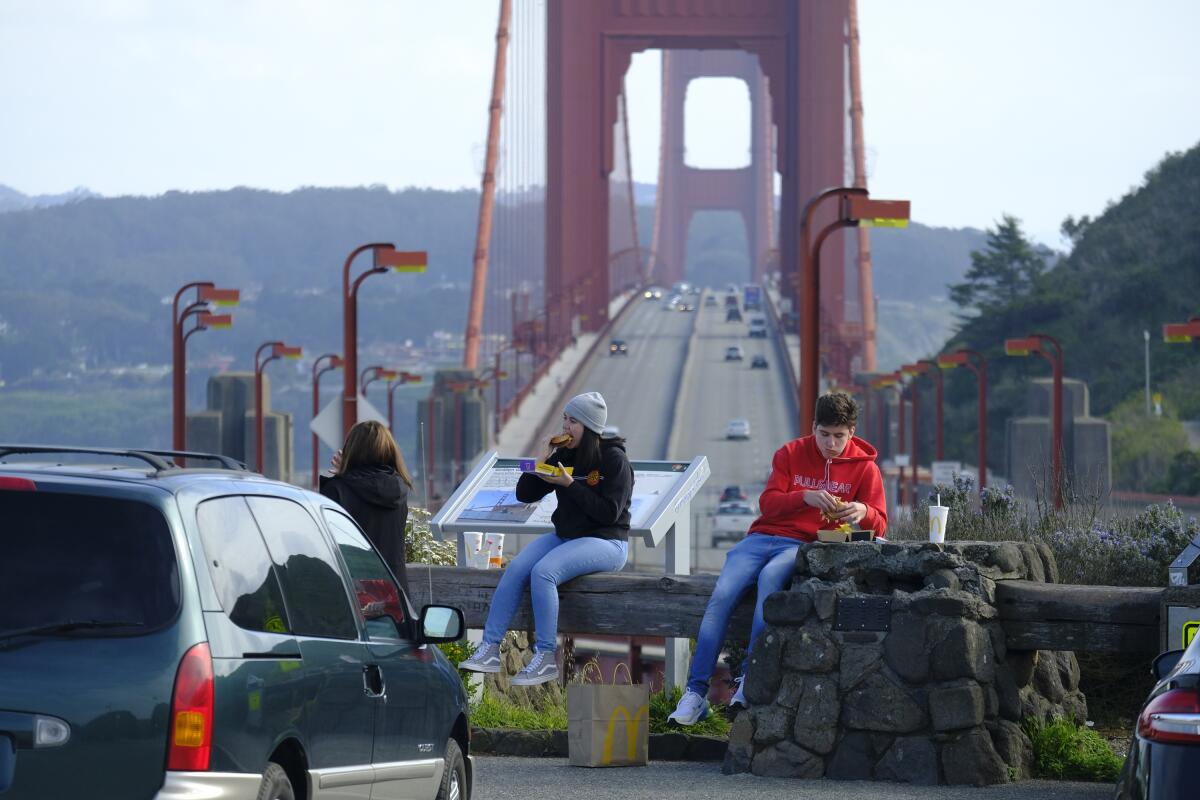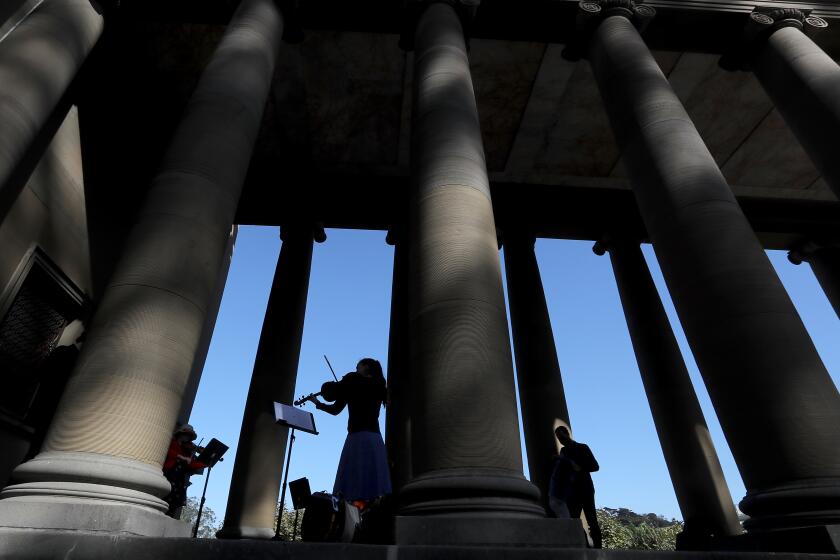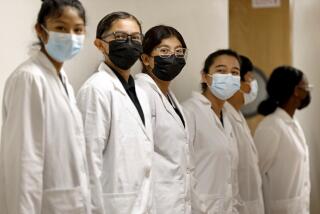Bay Area weighs 2-week quarantine for residents who travel over the holidays

San Francisco Bay Area residents who travel out of state this holiday season to visit family and friends may be met with a 14-day quarantine advisory when they return.
A group of public health officers from across the Bay Area — including the large cities of San Francisco, San Jose and Oakland — are considering implementing the coronavirus quarantine as pandemic fatigue continues to drive travel outside the area, Marin County Public Health Officer Matt Willis said Tuesday.
The proposal will likely be a “strong recommendation,” not an order, Willis said. If adopted widely, the decision could affect the region’s more than 7 million residents, as well as potentially millions more who might travel to the area.
Once a hot spot for coronavirus infections, the Bay Area is now in much better shape than most of the U.S. and has largely avoided the “third wave” plaguing other states. San Francisco’s positive coronavirus test rate was 0.8% at the end of October, making it the lowest rate of the 20 most populous cities across the U.S., according to The Times’ coronavirus tracker. It also has the lowest death rate per capita from COVID-19 of those same 20 cities.
San Francisco shut down early in the pandemic and later limited reopening. Now the city is the first urban center in California where the risk of infection is rated as minimal.
Marin County’s rate of positive coronavirus test results is about 1%, according to the most recent county data. The county is currently in Tier 3, or the orange tier, of the state’s color-coded reopening blueprint, which means prevalence of the virus is moderate. A number of the region’s counties are in either the orange tier or the yellow, which is the least restrictive.
That means there’s a lot to lose, Willis said.
“Everyone has worked really hard to reduce the transmission and lower case rates,” he said, “and the question is, how do we hold on to those gains.”
With colder weather moving activities indoors and more businesses reopening, and with the upcoming holiday season and the election, “there’s a lot coming together that makes us vulnerable in the remainder of the year,” Willis said, “and the last thing we need is for people to be importing the virus from outside.”
Once a traveler quarantines for the specified time and shows no symptoms, they can resume regular activities, Willis said. There’s a possibility that a traveler could take a coronavirus test within a shorter time frame, perhaps five to seven days after a trip, but he said the science was still out on whether the person would need to quarantine for an additional week.
A decision on a quarantine advisory for travelers could come as early as Thursday, Willis said. That day, the Assn. of Bay Area Health Officers — made up of health officials from San Francisco, Alameda, Contra Costa, San Mateo, Santa Clara, Napa, Sonoma, Solano, Santa Cruz, Monterey, San Benito and Marin counties, as well as the city of Berkeley, which has its own health department — is scheduled to discuss the matter.
Willis said, however, there is currently no consensus on the issue among the counties, and it is not a top priority for all officials. There’s a possibility that, instead of a regional approach, counties may make their own individual recommendations, he said.
Regardless of what’s decided at the upcoming meeting, Marin County public health officials still discourage unnecessary travel.
If residents decide that they are going to travel, Dr. Lisa Santora, Marin’s deputy public health officer, advised in a recent webinar that they not adopt the potentially looser coronavirus precautions of the city or state they’re visiting.
“We would really strongly encourage you to bring California with you on how you move through the place that you’re visiting,” Santora said.
Santora credited the Bay Area’s recent success in tamping down virus transmissions with a slow and steady approach that differentiates it from other areas.
“We believe the Bay Area has created a bubble in some ways around itself,” Santora said, “by practicing best practices, from face covering and maximizing physical distancing and opening slow, to be really measured and thoughtful.”
Meanwhile, some public officials on the East Coast have began ramping up travel restrictions as cases climb across the U.S.
New York Gov. Andrew Cuomo announced over the weekend that most U.S. visitors would be required to pass two coronavirus tests with a three-day quarantine in between. Those who don’t take the tests need to quarantine for 14 days.
Like the Bay Area, New York was once a coronavirus hot bed but now has one of the lowest positive-case rates in the U.S. A New York Times analysis of rates shows that, as of Monday, New York state’s daily average of new cases per 100,000 residents was 10.5. California’s rate was 10.7.
Now, Cuomo said, “travel has become an issue — the rest of the states pose a threat.”
More to Read
Sign up for Essential California
The most important California stories and recommendations in your inbox every morning.
You may occasionally receive promotional content from the Los Angeles Times.












